Honda celebrate the 30th anniversary of the legendary CBR900RR Fireblade with an Anniversary edition. We take it for a track-only ride on Donington Park, the most slippery racetrack in Britain.
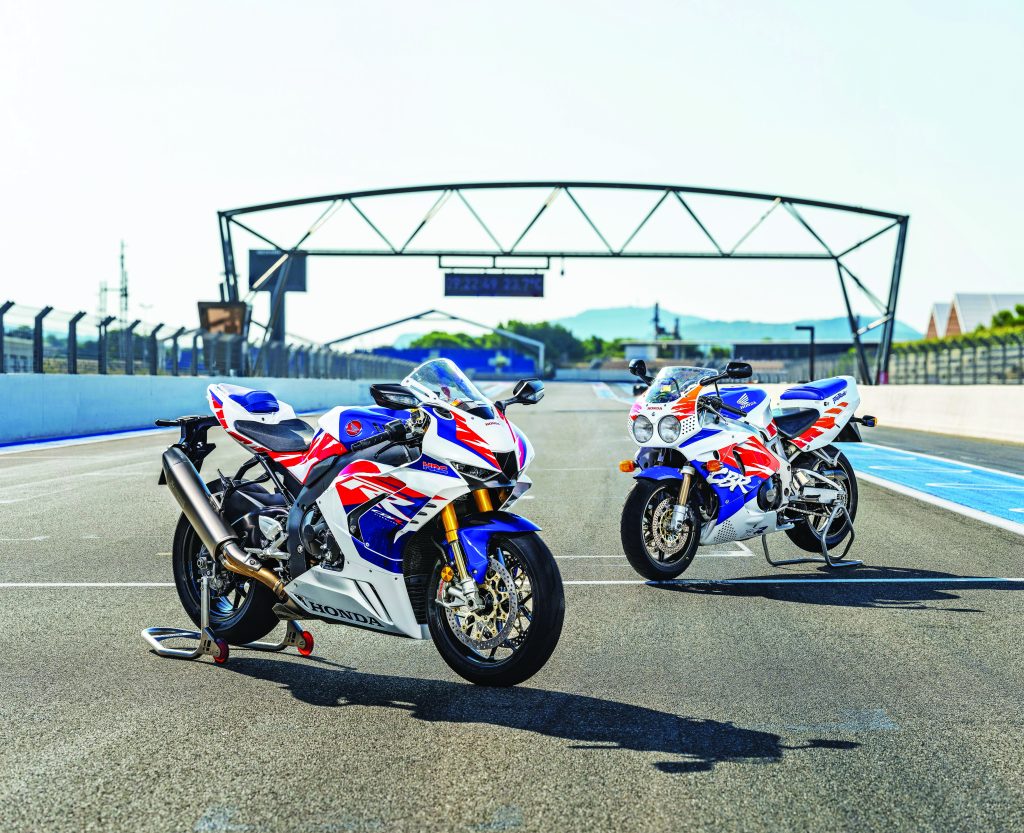
22YM HONDA CBR1000RR-R FIREBLADE SP 30TH ANNIVERSARY
Story: Adam Child ‘Chad’
Photography: Double Red
Why was 1992 a special year? Because Honda launched the now legendary CBR900RR Fireblade, of course. A year the sports bike landscape changed forever.
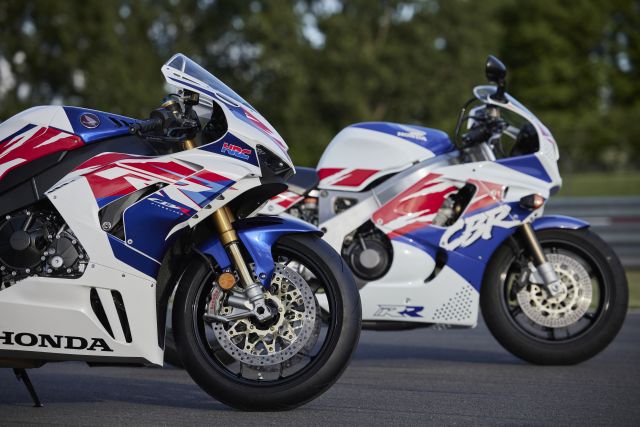
I remember catching sight of a ’Blade in numerous magazines—its 16-inch front wheel hoisted joyfully in the air in most pictures—and later at the NEC bike show when I was 16 and just starting my lifelong journey on two wheels. Even then, I could see that this machine redefined what a road-going superbike should be.
While the competition was searching for more power, producing bigger and heavier bikes or purpose race reps for the track, Honda, with Baba san, the creator of ’Blade at the helm, chose a different path with lightness and handling being the key. The ’Blade was designed for the road, to work in the corners, and relatively unconcerned with peak power and torque figures. It could not match the grunt of the competition but it rang rings around them in the bends.
That original ’Blade has rightly gone down in history because it set a new benchmark for roadgoing superbikes. Over the years, Honda were forced to constantly develop the ’Bade as the competition caught up: increasing its capacity and opting for a more conventional 17-inch front wheel. Over the last 30 years, the ’Blade has won multiple Isle of Man Tourist Trophy races and a World Superbike Championship, plus domestic championships around the world. To celebrate 30 years of the bike, Honda announced a very special anniversary model, which dons a “Tricolour” paint scheme designed by Hiroaki Tsukui, who was also accountable for the original 1992 bike’s colours—the same design carried into the Isle of Man TT on the race bikes ridden by John McGuinness and Glenn Irwin, now the fastest ever newcomer to the TT.
The Anniversary ’Blade does not just strike a chord with those who remember the 1992 original. Honda have also taken the opportunity to make improvements in the 2022 model in response to criticism from the press and public and to give the ’Blade an extra kick on the racetrack.
There are still two models to choose from: the “standard” CBR1000RR-R and the SP (Anniversary colours or not). The RR is suspended on Showa big-piston forks and a BFRC Lite rear shock, along with Nissin radial brake calipers, with updated pads for 2022. The pricier SP version on test features semi-active Öhlins suspension and Brembos replace the Nissin stoppers. The SP also features a quick-shifter as standard equipment.
For 2022, Honda have not gone in search of more power—217.5 hp is probably enough for most of us—instead, they concentrated on making the bike more usable, much as Baba san did 30 years ago with the original Fireblade. This time Honda have improved the mid-range power via a new airbox and intake funnels. Intake ports are narrower to boost airflow speed and give more torque. The compression ratio has increased from 13.2:1 to 13.4:1 by skimming the head slightly. There is also a new catalytic converter and a reshaped exhaust. The simplest way to improve acceleration and give the sensation of more mid-range is to change the gearing, which is precisely what Honda have done. The original gearing was incredibly long, but now the rear sprocket size goes up from 40 teeth to 43. The wheelbase has increased slightly, up by five millimetres to 1,460 mm, probably to compensate for the longer chain and accommodate the larger rear sprocket.
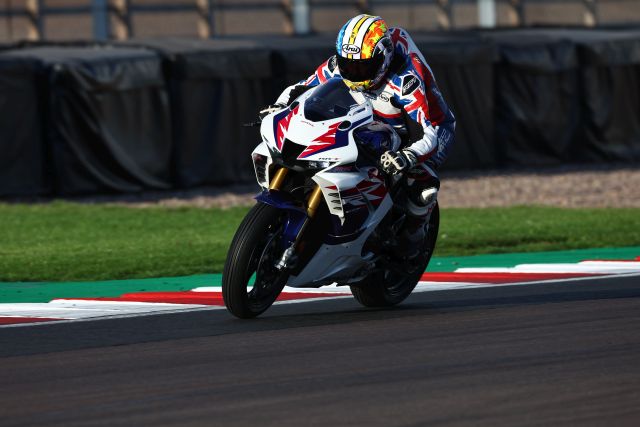
Electronics have also been tweaked. The ride-by-wire throttle now has an easier action, while HSTC (traction control to us) has been revised to give a smoother reintervention.
The refreshed ’Blade is available in standard colours or the dramatic Anniversary colours, which we have on test. We stepped out on a notoriously slippery Donington Park to feel the difference.
I have raced at Donnington Park multiple times, more so in the rain than dry, and know it is the slipperiest of UK tracks when it is raining. Rolling down the pit-lane astride the Anniversary ’Blade, its unique production number glinting from the top yoke… Yup, I felt a little apprehensive. But I ran a ’Blade on the road and track-days last year and know how good the lean-sensitive rider aids are, so soon felt at home.
I should have felt nervous in the tricky conditions and I should have engaged first gear, using the top 25 per cent of the revs, as I did on the 2021 bike. However, I was so busy concentrating on my lap and line, I had almost forgotten about the changes made in the 2022 bike. In the tricky conditions, I had automatically started short-shifting, using the bike’s new helpings of torque and lowered gearing—without realising it. The 2022 bike pulled through the mid-range, driving hard towards the next smooth gear-change, the revised quick-shifter feeling fast and smooth, like a race bike’s.
So, instead of using first gear in the slowest corners or dropping to second from third, then holding on to the lower gears using the older ’Blade’s top-end rush, the 2022 ’Blade encouraged me to use a gear higher. In fact, at Donnington Park, I did not touch first gear all day apart from entering and leaving the pit-lane. Things might have been different in perfect conditions, but in the damp the ’Blade was far easier to ride than a 217-hp superbike should be. Some of this is due to the excellent electronics. In fact, we need to coin a new superlative to describe the brilliance of the standard, lean-sensitive rider aids.
With over 200 hp on tap in tricky conditions on a lightweight, 201-kilogram scalpel, I should have been as nervous as a virgin in a brothel, but, instead, I felt relaxed. Do not get me wrong, you can still crash, but when you are braking into the old hairpin, going back a few gears while leaning and braking at the same time, it is nice to know you have high-quality electronic back-up.
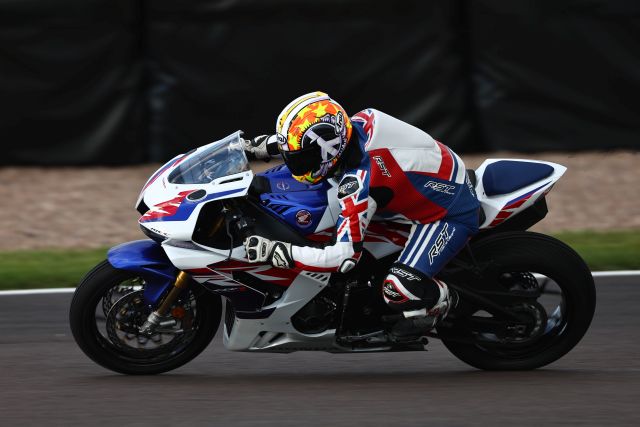
Exiting Coppice, an opening corner that leads on to the back straight, is an excellent test of the electronics, as you are asking a lot of the rear tyre while accelerating hard. Each lap I was demanding more of the bike as I exploited the new bike’s mid-range, accelerating harder each lap with ever more lean.
In riding mode 2 (Sport) and with the TC set to 5, you can feel HSTC working. You ask for full power, but the ’Blade holds you back, depending on lean angle and conditions. Push the bike upright, holding a constant but lighter throttle, and the bike accelerates harder. Mess up, miss the apex, add lean, and the bike once again takes over, giving you less power. There is not any misfiring or backfiring; it simply limits the power to control the slide. You ask for 200 hp and it gives you 150 hp or less.
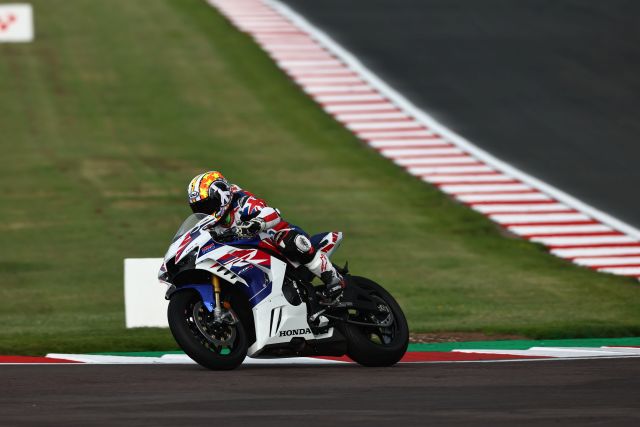
If you are unfortunate enough to hit a wet patch or curb the rider aids quickly, flick into overtime to control the sudden slide. Several times I felt the rear spin momentarily, but before I could close the throttle, an automatic reaction, the electronics had taken over, reduced the power, then allowed rapid acceleration with smooth reintervention.
So effective and well-integrated are the electronics that I was actually thankful to the tricky conditions which allowed me to push and test the quicker rider aids with confidence. It is not often you can say that a ride on a 200 hp-plus beast on the slipperiest track in the UK in horrible weather was truly enjoyable, but it was. And that was mainly owing to the excellent electronics and chassis.
This was a track-only test, but the improvements felt on the track should transfer to the road. Lowered gearing is a trick many have used to convert a race bike into a road bike. More torque, more mid-range, a smoother and lighter throttle action, and improved rider aids will all benefit the rider on the road. Even the slicker and quicker shifts will be an added bonus.
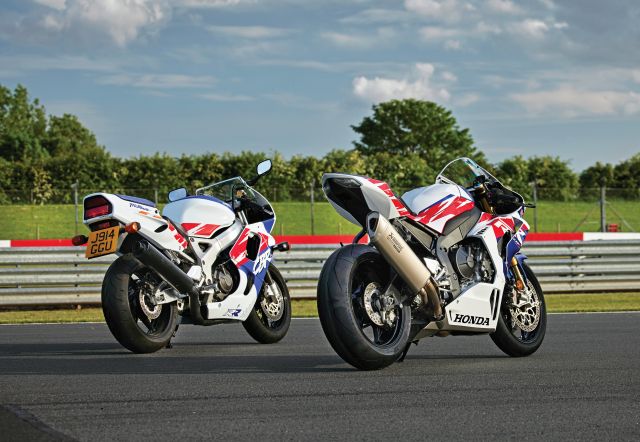
Honda have listened to market feedback and tweaked the ’Blade, improving the bike for the road and track with improved mid-range and altered final gearing. The revisions to the throttle and TC are only marginal and, without the old bike present, it would be difficult to split the differences on the road. However, we can categorically say that the rider aids and electronics are superb. However, for most—and I have to say this is very much the case for me—the best improvement is new Anniversary colours, which, for those of a certain age, are wonderfully evocative; those refinements in the mid-range and electronics just being an additional incentive.
A Chat with Honda Racing
Havier Beltran
‘We’re restricted on what we can change to the Superstock bike; the cylinder-head and airbox must remain standard. Therefore, the changes Honda have made to the 2022 bike are advantageous to our race bikes, more so the Superstock bike. The intake ports have been reshaped to narrow the air-flow, which increases torque. The intake to the airbox has been refined, again to increase the torque. The rules don’t allow us to change these parts on the Superstock bike, so any changes in the road bikes are transferred to the Superstock bike, even the lighter spring on the ride-by-wire throttle.
‘Some of the changes don’t affect the race bikes as we change the gearing and remove the rider aids and SP electronic suspension, but we have seen a significant gain in mid-range torque. We didn’t really need any more peak power or peak torque, it’s the spread of torque where we have seen the biggest gain and this is felt on the road by road riders. Comparing the old and new bikes, there’s a noticeable improvement in the mid-range.
‘The changes made in the road 2022 bike do affect the superbike, but not as much as we can modify the engine from the pistons up; therefore, we can change the head, unlike on the Superstock. But the changes put us in a better start position, like having a head start over the older bike.’

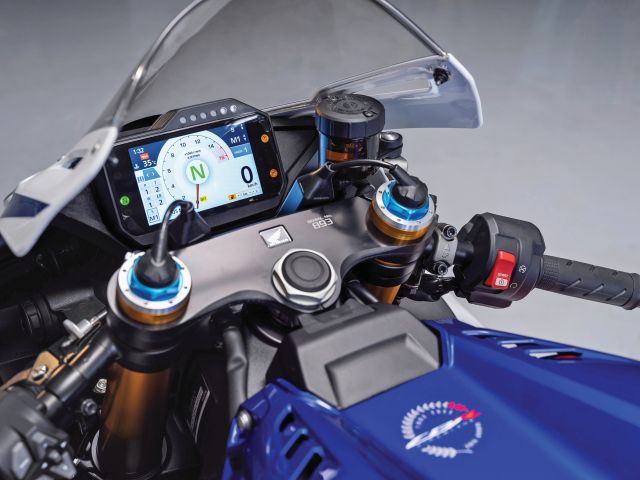
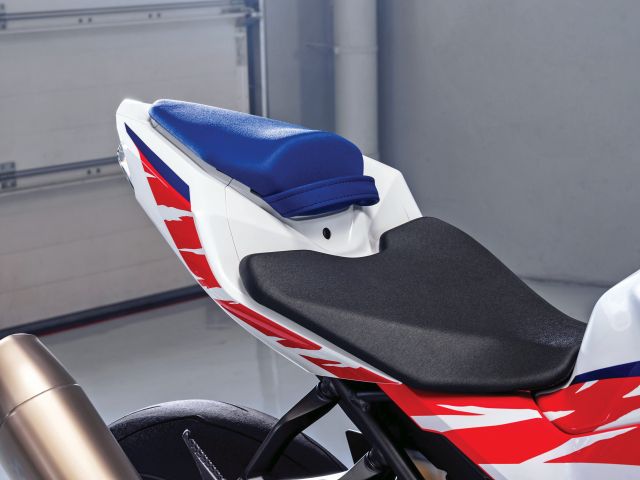
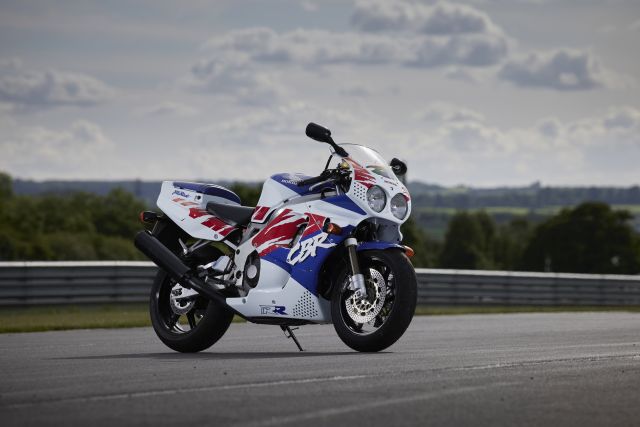
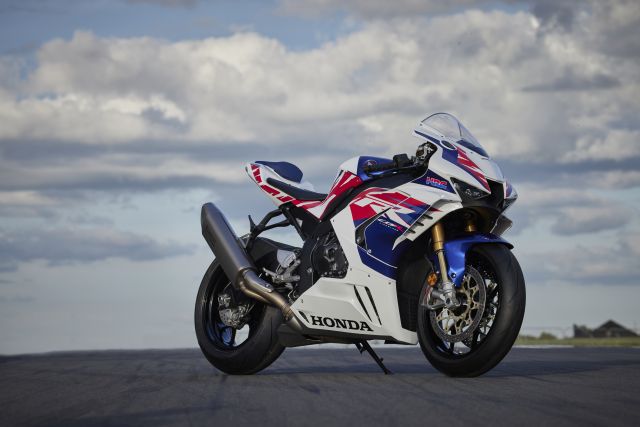

Leave a Reply